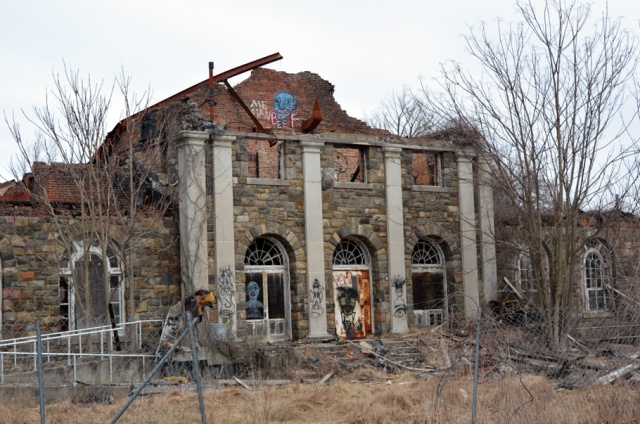
Stewart Hall
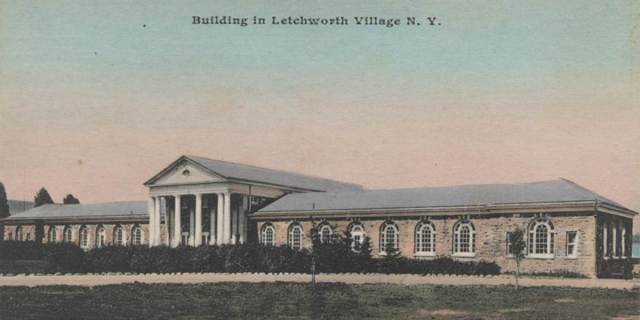
Stewart Hall Postcard (Image Source: PIRC-NY)
- Interior Hallway
- Twisted Metal of Stewart Hall
- Twisted Metal of Stewart Hall
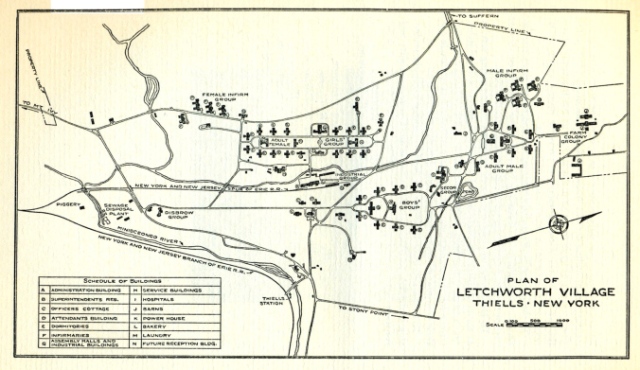
Building Directory (Image Source: AbandonedNYC)
For reference most of my photos are of the buildings in the Boys Group, located in the lower middle of the building directory.
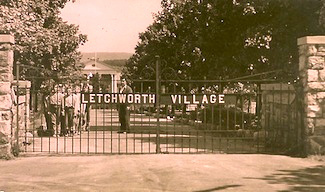
Image Source: Here’sDave.com
Reading the about the history of Letchworth Village is like wrapping yourself in a wet blanket. Enjoy.
Development and Architectural History
The official name for this facility was Letchworth Village Home for the Feeble Minded and Epileptics. Letchworth was a reference to William Pryor Letchworth, a humanitarian and philanthropist. In 1911 the institution began taking in developmentally and physically disabled residents. The facility is situated on what was a pastoral 2,362 acre site. Similar to its contemporaries, Letchworth Village was meant to be a humane alternative to the previous generation of high-rise asylums. The campus was segregated with the male and female populations on separate portions of the site. The programing for the dormitories was that each was to have a capacity of 70 residents and not be more than two stories tall. Basements were not to be used for housing residents. Residents were to live in designated buildings grouped with others based on their mental capacity. The planning guidelines for the site dictated that the dormitories be a minimum of 200 feet apart to provide open space and allow for playgrounds for the buildings. Also, the location of each building was to take into account the natural beauty of the site. All of the buildings are low-rise residential type ashlar patterned stone buildings designed in the Greek Revival style surrounded by what was a working farm. The residents worked on the farm as a form of therapy, as well as to support the facility.
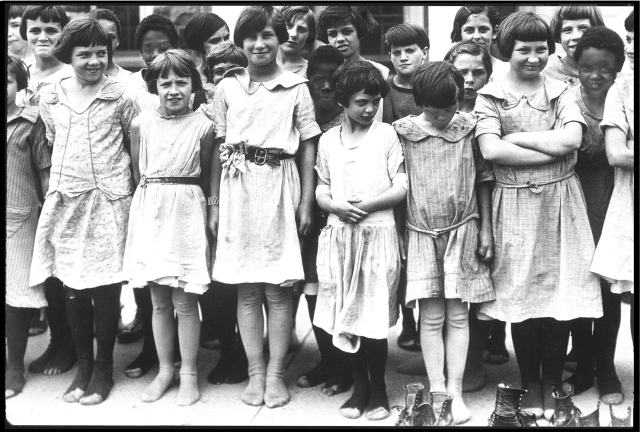
Girls of Letchworth Village (Image Source: AbandonedNYC)
Life at Letchworth
Neglect, abuse and overcrowding were well documented issues at Letchworth. The facility reached its capacity of 3,000 residents in 1935 and by the late 1960s the population had swelled to 5,000. In 1948, one of the first polio vaccines was illegally tested on twenty children living on the campus. Partly due to overcrowding and underfunding, conditions at the site degenerated. Two major journalism pieces were published regarding the shortcomings of the facility. In the 1940s Irving Haberman published photos of dirty, naked and malnourished residents on floor mattresses with little to keep them occupied. Then, in 1972 Geraldo Rivera released a documentary titled Willowbrook: The Last Great Disgrace. While the main subject of the documentary was Willowbrook Hospital on Staten Island, Letchworth Village was also featured. Rivera, then a local investigative journalist, won a Peabody award for his work exposing the poor conditions at the facilities.
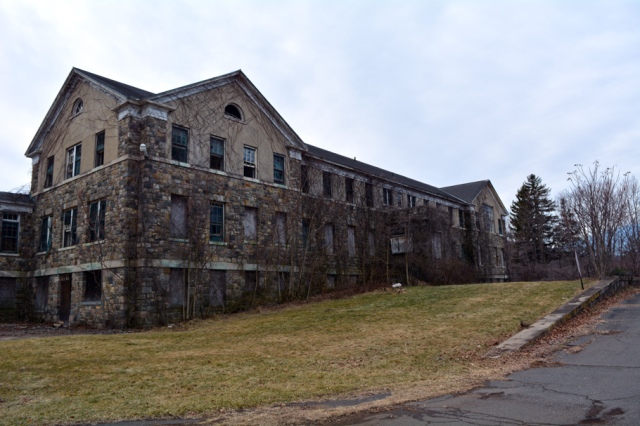
Letchworth Building
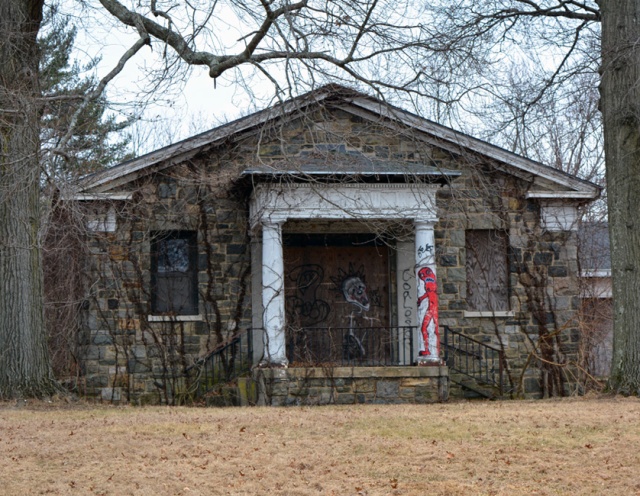
Letchworth Dormitory Building
Closing Letchworth
The treatment model employed by Letchworth Village was phased out across the country as reports of abuses surfaced, better treatment options became available and public perception of mental health treatment changed. As a result, the facility phased out admissions over time and eventually deinstitutionalized its residents by moving them to group homes. Letchworth Village was decommissioned in 1996. Since then, the property has been split up. Philip J. Rotella and Patriot Hills Golf Courses are built on former Letchworth Land. Some of the remaining buildings have been converted into Fieldstone Middle School, Willow Grove Middle School and the Stony Point Justice Court. The remaining buildings lie abandoned within a city park in Theills.
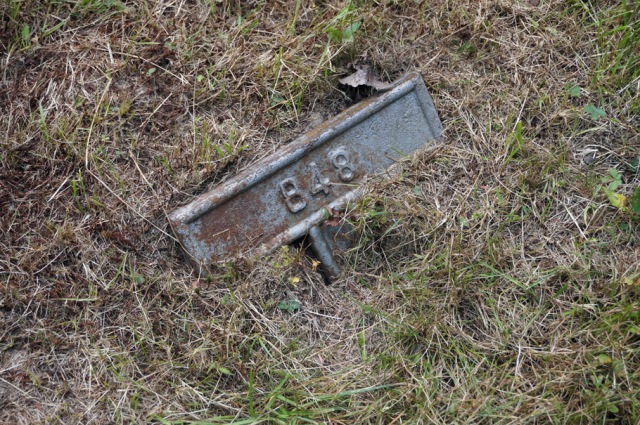
Grave Marker

Memorial with Names
Letchworth Cemetery
The Letchworth Village cemetery is tucked away in clearing among some woods. It is open to the public. Most of the graves are sited with numbered metal markers. As a memorial to those who suffered or were previously forgotten, a granite plaque has been erected listing the names that correspond to the numbers.

Letchworth Village Building
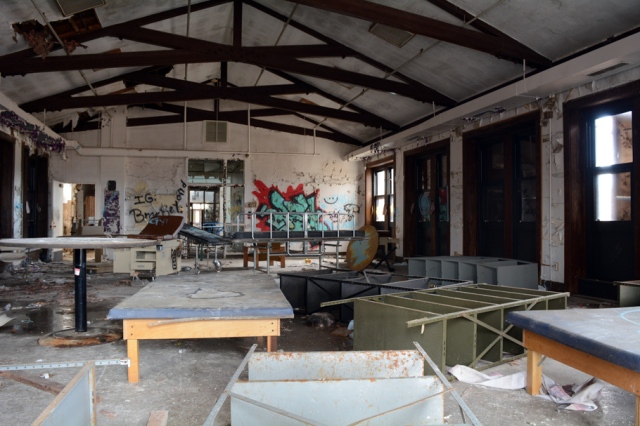
Building Interior
Exploring Letchworth
Letchworth Village is one of my least favorite exploration sites. I don’t like ending on a negative note but the history of this place is a total buzz kill and the buildings are completely trashed. I was caught by a police patrol while exiting one of the buildings. So, maybe if I had been able to explore more of the buildings I would be more into the place. The cop that caught us was totally cool about it, asking us to leave before escorting us to the Letchworth Village Cemetery which is open to the public. If you wish to visit the site, it is open from dawn to dusk as a park but the buildings are off limits. The take-away I got from our conversation with the police was that if you’re caught and you act like an asshat they will arrest you. With that I will leave you with this depressing video on Letchworth Village.
Sources:
- “Legend Tripping in Letchworth Village” AbandonedNYC.com
- “Letchworth Village” Opacity.US
- Levine, David “The Real History of Letchworth Village” Hudson Valley Magazine








Hi All,
Here’s a couple videos of my visit inside the building a few years back in case you want a tour.
LikeLike